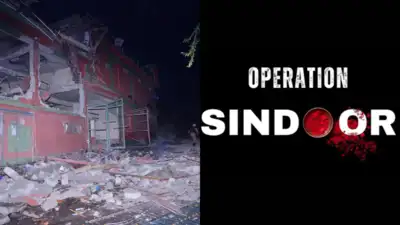India’s Foreign Secretary Vikram Misry, along with Wing Commander Vyomika Singh and Col. Sofiya Qureshi, held a press briefing on Wednesday to provide information about Operation Sindoor, the Pahalgam terrorists attack counterstrikes conducted on the intervening night of May 6, 7. While speaking to the media, Col Qureshi and Wing Commander Singh released the visuals of terrorist camps targeted in the strikes, validating New Delhi’s long-persistent claims of Pakistan harbouring terrorists.
Col. Sofiya Qureshi said, “Operation Sindoor was launched to give justice to victims of Pahalgam terrorist attack. Nine terrorist camps were targeted and destroyed.”
Qureshi added that no military installation was targeted, and neither were there any reports of civilian casualties in Pakistan. She added that the camp destroyed in Muridke, where those involved in the 2008 Mumbai Terror attacks – Ajmal Kasab and David Headley received their training.
Wing Commander Vyomika Singh said, “The Indian Armed Forces launched Operation Sindoor to deliver justice to the victims of the Pahalgam terror attack and their families. Nine terrorist camps were targeted and successfully destroyed . . . The locations were selected to avoid damage to civilian infrastructures and loss of any civilian lives.”
Notably, Markaz Subhan Allah, the JeM headquarters, and Mehmoona Joya camp, the HM’s one of the largest camps were destroyed. Meanwhile, Foreign Secretary Misry said that the intelligence agencies had warned of impending attacks on the Indian territory, and since over a fortnight was passed and no action was taken against Pakistan, India had to strike. He said that the attack was for both to prevent and deter attacks on India by Pakistan and its protégé terrorists.
He also called out Pakistan for trying to get the name of The Resistance Front removed from the UNSC statement, which he said was convincing enough to prove Pakistan’s involvement.
Regarding the Pahalgam attack and the modus operandi, he said, “The attack in Pahalgam was marked with extreme barbarity, with the victims mostly killed with head shots at close range and in front of their family . . . the family members were deliberately traumatised through the manner of killing, accompanied by the exhortation that they should take back the message. The attack was clearly driven by the objective of undermining normalcy returning to Kashmir . . . “

